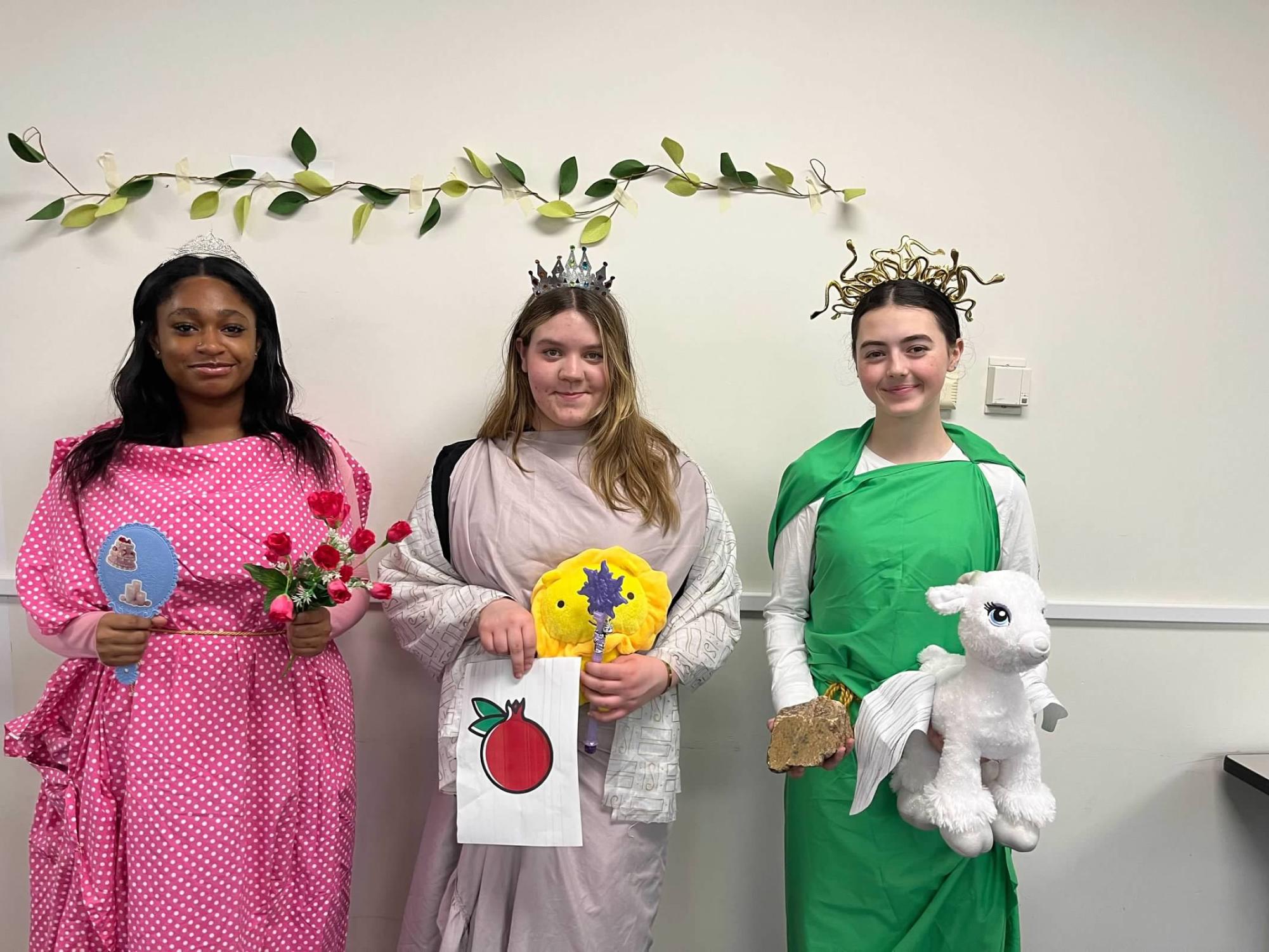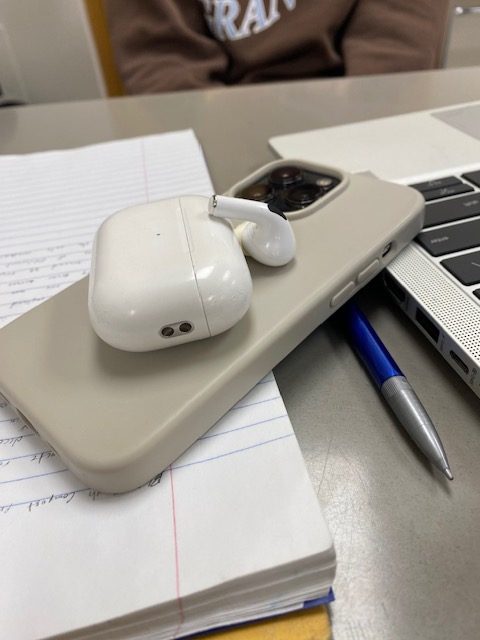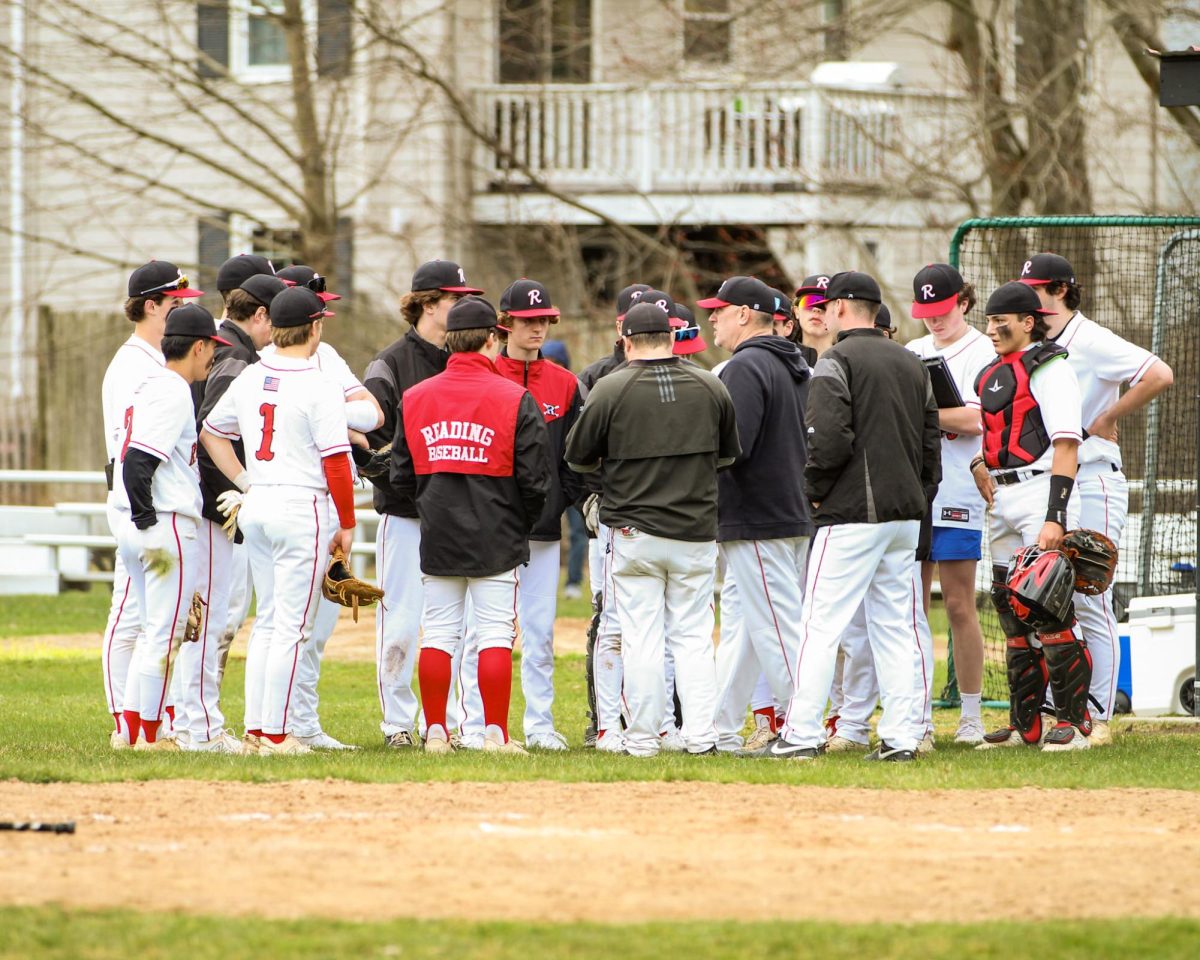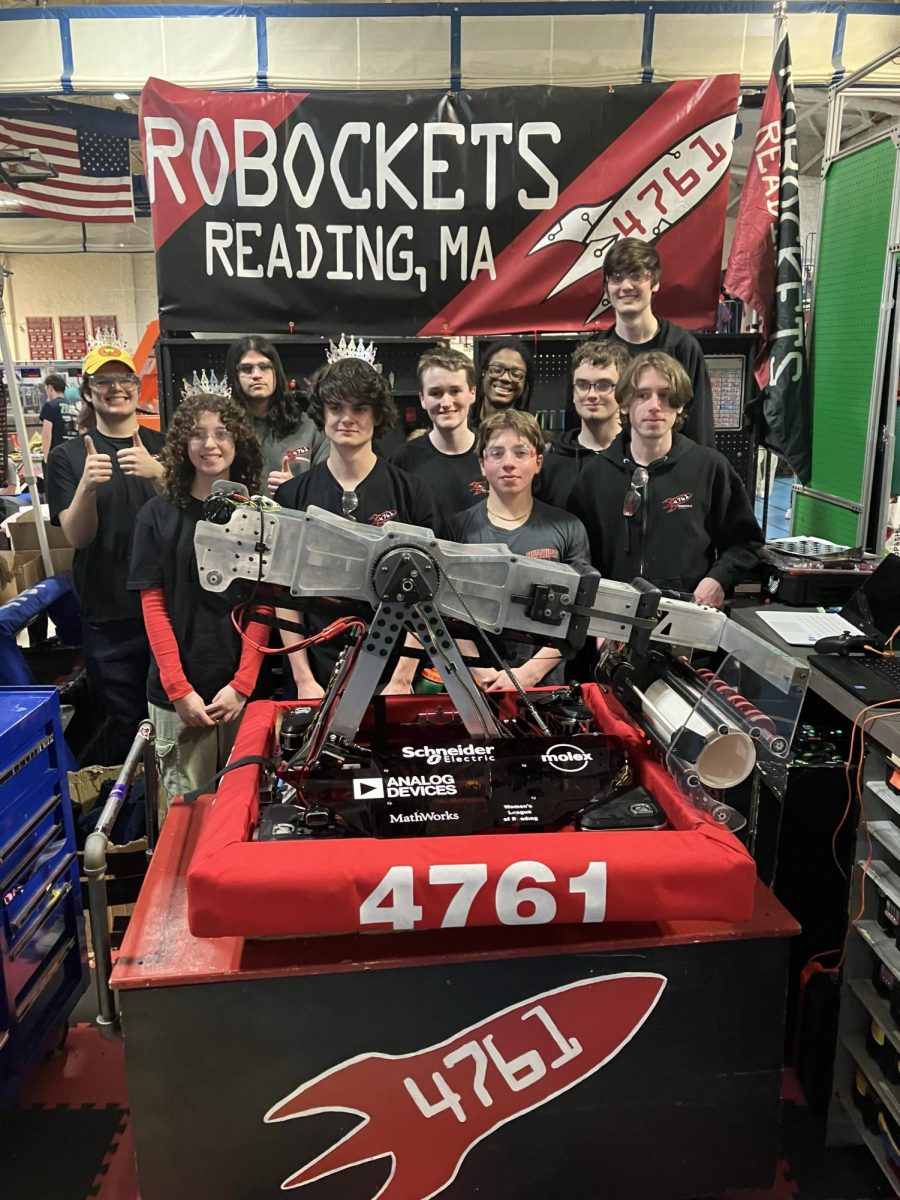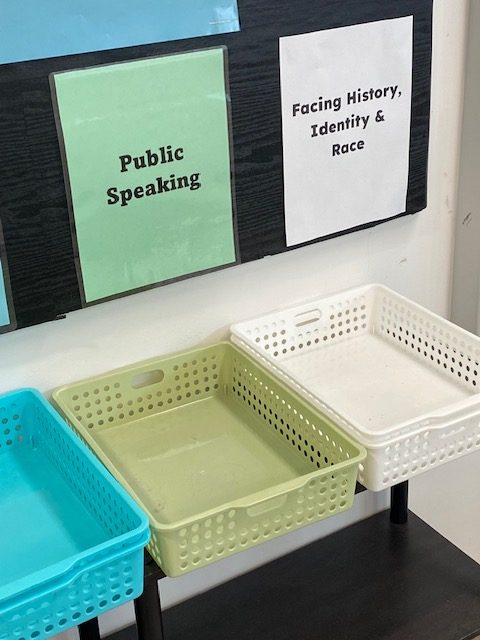The streets clamored. The crowd moved as one united body, all donning the pileus – the freedman’s cap – no matter their status. It was Saturnalia, and everyone in Rome was now equal. They hosted grand feasts, boisterously celebrating the occasion with drinking and gambling. They gave gifts to one another: a saddle, antique vases, a lantern made of a bladder, a few of many examples detailed by the poet Martial in Book XIV of his Epigrams. As the celebration raged on, cries of “Io, Saturnalia!” permeated through the air. In the name of Saturn, the god of seed-sowing, the Romans transformed into their most authentic, ridiculous selves.
Saturnalia was originally celebrated for just one day–on December 17th–but over the years the holiday developed into a week-long celebration, sometimes longer. On this, Ancient Roman philosopher Lucius Anneus Seneca lamented in his Moral Letters to Lucilius, “It is the month of December, and yet the city is at this very moment in a sweat. License is given to the general merrymaking. Everything resounds with mighty preparations, – as if the Saturnalia differed at all from the usual business day! So true it is that the difference is nil, that I regard as correct the remark of the man who said: ‘Once December was a month; now it is a year.’”
Saturnalia came to an end when the empire of Ancient Rome began to fall in the year 476 A.D. It is popularly claimed that the Latin language died with Rome. It is true that there are no native Latin speakers any longer, nor does anyone primarily communicate in it. But Latin remains alive in many ways in modern society: in church hymns, in a court of law, in schools. In fact, on Thursday, May 2nd, Ancient Greek and Roman culture lives on in this very room: Room 413, known to many as the DLR. Seneca would be relieved to know that, at RMHS, Saturnalia is a one-day celebration.
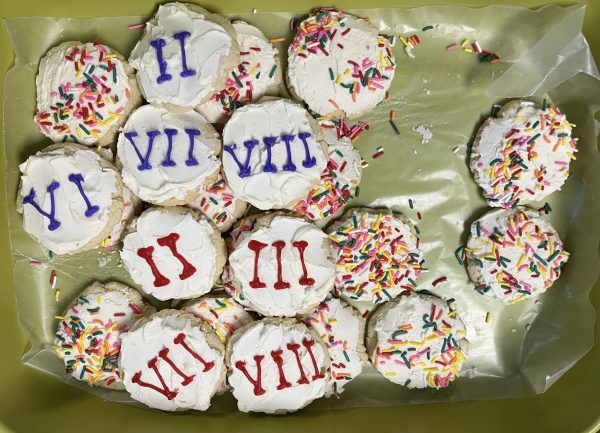
Party Prep, Roman-style
Over 1500 years have lapsed since the empire collapsed, history obscured in the rubble that remained. It’s a spring day at RMHS and Magistra Irons is laying out a tablecloth in the DLR. It is around 9:18 – B Block is soon to begin. On a cart beside her, there are Tupperware containers of food piled on top of each other. Saturnalia, revived from the dead, is soon to commence.
Latin students of all levels begin to shuffle in, each hoisting a bag of their materials. Magistra Irons encourages them to start putting together their costumes. With bedsheets in hand, students grab a couple of pins and a friend. They assemble the sheets into one of two fashions: either a stola dress, the article of choice for women, or a toga, designed for men. From there, the finishing touches are added. Among these finishing touches are an ivy crown atop someone’s head, a pair of angelic wings adorning another’s back, and one student even wields a fishing rod. Each student represents a figure in Greek or Roman mythology (as the two are often intertwined), be it a god, a Titan, a hero. Aside from their traditional Roman wear, students were required to incorporate three symbols associated with their figure in their costume. The care and attention put into each costume is evident.
All of the food is laid out on the table Magistra Irons had so meticulously set up by 9:30, and those finished dressing up gravitate toward it like moths to a flame. Joyous chatter fills the room. Just as the Romans did, these students were soon to feast and revel in each other’s company. It’s not quite how Saturnalia played out in the age of Ancient Rome – the time of year, the lack of gift-giving (save for the food and utensils students volunteered to bring in), the addition of costumes and the three symbols that went along with them, as well as the ceremony showcasing those things – but the two celebrations shared the same all-encompassing feeling of unity nonetheless.
It’s an impressive spread Magistra Irons assembled. There’s traditional Roman food – apples, olives, Roman-style bread. However, there’s also other treats, which pay homage to Greek and Roman culture. It comes in the form of gingerbread cookies iced to look like the gods, cookies decorated with Roman numerals, and a rice krispie-based dessert resembling dormice; real dormice were a delicacy in Ancient Rome.
“I’m excited to hang out with my friends and eat some food,” Bruno Mancuso (‘27), a Latin 1 student dressed as the Greek god of sleep, Hypnos, shares. Another Latin 1 student, Madaket Carpenter (‘27), is dressed as Nyx, the Greek goddess of the night. She shares Mancuso’s sentiment: she is excited to enjoy some food alongside her friends.
The consensus is clear among students across all levels of Latin. Miles Couture (‘24) is in Honors Latin 4 and dressed as the Titan Atlas, and says he is excited for “just eating stuff.” Latin 2 student Jessica Wong (‘26), dressed as the Greek goddess of magic, Hecate, appreciatively adds an anecdote about the food, “It is student-made, not store-bought.”
There is little that unites people more than the sharing of homemade food. The people of Ancient Rome greatly valued dinner parties – cena – and the same is felt today. Food is the fuel of life, often imbued with the attention and care that the chef dedicated to it; you’re almost able to taste it. Eating together has a sort of power to it, and it is evident at this time. As students take their pick of the food before them, they talk and laugh about the connections between the mythological figures they are dressed as: Hera and Zeus’s tumultuous relationship in particular becomes a topic of discussion.
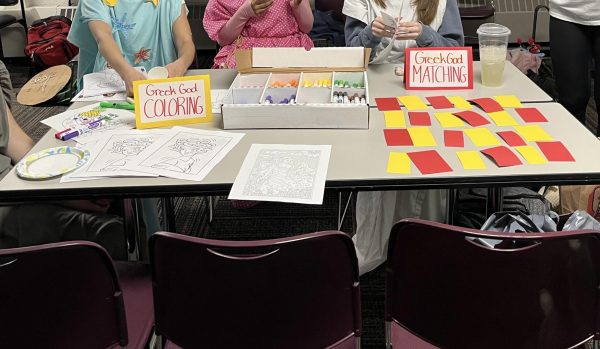
Activities Begin
At 9:42, activities begin to be set up on the other side of the room. Latin 2 student Ella Mcmenimen (‘26), dressed as Athena, Greek goddess of wisdom, is laying out coloring pages – featuring Medusa, Poseidon, a pegasus, among many other things – as well as cards for a matching game she and Grace Cremin (‘26), another Latin 2 student who is also dressed as Athena, created. Each Greek god has two cards dedicated to them, which the participants must match together.
The festivities are soon in full swing. At 10:08, the start of flex, more students file in and get ready. All the activities have been put together now: gladiator fights, chariot race trivia, and the aforementioned Greek god coloring and matching.
A line of tape creates a divide across a section of the carpeted floor. Right nearby, a piece of paper is taped to the ground, reading the directions to the well-loved gladiator fights, “Two players will start, facing each other and standing behind their own lines with the end of their pool noodles placed down in front of them. Referee will do a countdown and say start. The two players will now try to touch each other with pool noodles and whoever hits the other first wins.” Of course, that comes with the condition that you must not step over the line while trying to land a hit on your opponent. If you do cross the line, you must play on one foot.
Running the station is Nick Mirogiannis (‘25) and George Mirogiannis (‘24). They are Honors Latin 3 and 4 students dressed as Artemis, Greek goddess of the hunt, and Apollo, Greek god of the sun, respectively. The two of them stand on either side of the fired-up participants in order to moderate. Each player wields a pool noodle. At the command of the referees, the fight begins. The pool noodles desperately thrash in the air in search of victory, giving off an ear-piercing squeak when they collide.
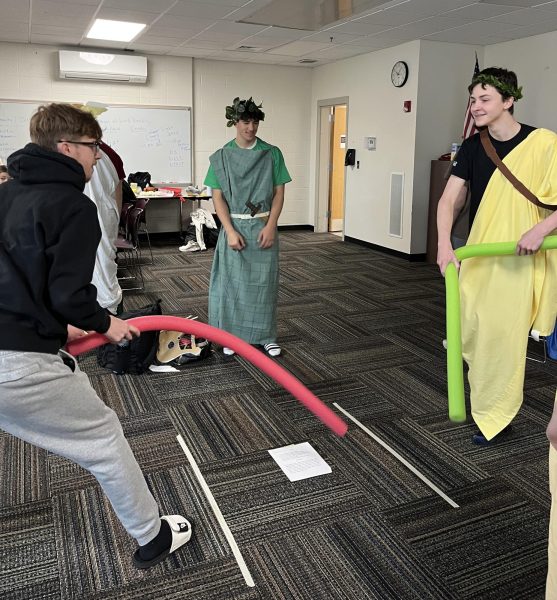
“Zeus vs. Zeus,” Nick Mirogiannis comments as AJ Palm (‘24) and Evin Howell (‘26), both dressed as the king of the gods, step up to face each other. “Okay, let’s go.”
It’s a fierce battle – as fierce as a battle with pool noodles could be, anyway – and in the end, Palm emerges victorious. Anthony Fratto (‘26), dressed as the Greek god of war, Ares, takes Howell’s place. “We got a new opponent: Ares!” Nick Mirogiannis announces, and the fight kicks off once again.
Amidst the chaos, Sean Hoffman (‘25) and Ben Cramer (‘25), dressed as Artistaeus, the Greek god of beekeeping, and Bootes, the Greek demi-god, host four people at their table. They are engaged in a game of chariot race trivia.
Chariot racing was a popular spectacle in Ancient Rome. The Reds (russati), the Greens (prasini), the Blues (venerati), and the Whites (albati), were the four teams who ran the races. Chariot racing was quite dangerous, sometimes resulting in injury or death. Thankfully, today the stakes aren’t that high. Players must simply provide the correct answer to the trivia question on the flash card presented to them, and on a laptop screen, their team’s chariot would move forward.
“Which Latin word means horse?” Is the first trivia question of this round, to which a player correctly answers, “equus.” Cramer turns to the laptop behind him and advances their chariot forward by one. Cramer had coded the program displaying each team’s standing in the race himself.
Presentation Time
It is 10:19 when Magistra Irons’ voice rings out over the noise. She asks everyone to sit down in the audience of chairs in the middle of the room. People put down their markers, tuck away their flashcards, relinquish their pool noodles, and sadly bid adieu to the food table. They grab any missing props that are part of their costume and grab a seat.
Each class has at least one MC, usually two, who stand up at the podium to introduce their classmates, divulging a little about their costumes and what their symbols mean in relation to their mythological character. Latin 2 goes first, with Amelia Benedict (‘26) – dressed as Hephaestus, the Greek god of blacksmithing – and Wong representing their class. Students are called up in groups of two or three, standing together in front of all of the other Latin students to show off their work. Once they’re introduced, a round of applause breaks out.
The ceremony marches on. The audience watches attentively, hands unconsciously fiddling with the props in their hands. Magistra Irons presents the costumes of Latin 2 Studies, followed by Nick Mirogiannis and Katie Trionfi (‘25), the latter of whom is dressed as the Greek bard Orpheus, presenting the joint Honors Latin 3 & 4 class’ costumes. Latin 1 is represented by Adam Hogan (’27), who is dressed as the demi-god Perseus, and Mai Arington (’27), dressed as Maia, a nymph in Greek mythology.
Saturnalia unfortunately ends there, as the bell rings and C Block begins. But the event sticks itself into people’s memories, and they reflect back on it in wonderment: the head of Medusa in Perseus’ grip, a baby Hermes cradled by Maia, Nyx’s black wings, Hades’ bident held proudly in his hand.
A Teacher Reflects
Magistra Irons is the sole Latin teacher at RMHS this year, expertly juggling teaching all four levels of Latin. She has worked at the school for 23 years, and the event has been celebrated all that time. “It makes me sad to admit this, but people consider their language class to be kind of like an extra class, and I think during COVID, people were really focused on just passing core subjects like English and Math and History,” Magistra Irons said. However, Magistra Irons is hopeful about the future of Latin at RMHS. Latin enrollment has been increasing steadily and has a good reputation in the school. Additionally, students who do take Latin are often really enthusiastic about it.
“I love that people are sort of apprehensive about the project the first time they do it… But then, later on, on the first day of school, if I ask [incoming Latin 2] students, ‘what was your favorite memory from last year’s Latin class?’ They always say it was that day where we dressed up and had food; it was Saturnalia.”
“Thank you Ms. Irons for everything,” one Latin Studies 2 student wrote in a post-Saturnalia survey. “You’re such a great teacher.”
The Romans used to build household altars during Saturnalia, lighting candles in honor of Saturn. When the celebration came to an end, the flame was blown out. But each year, the candles were lit again, until the Roman Empire was eventually no more. For one day, anyway, RMHS has reignited that fire that for so long remained extinguished.
